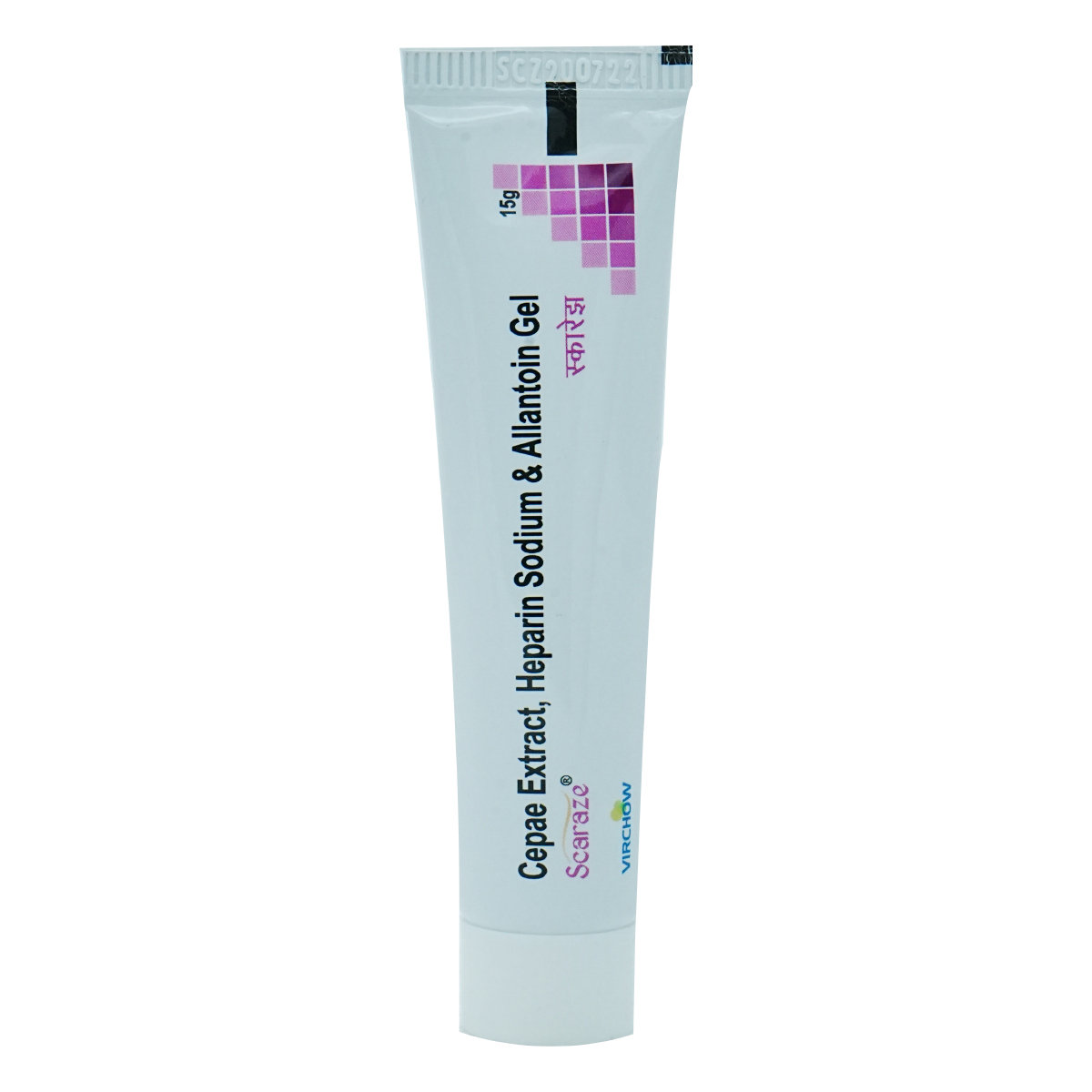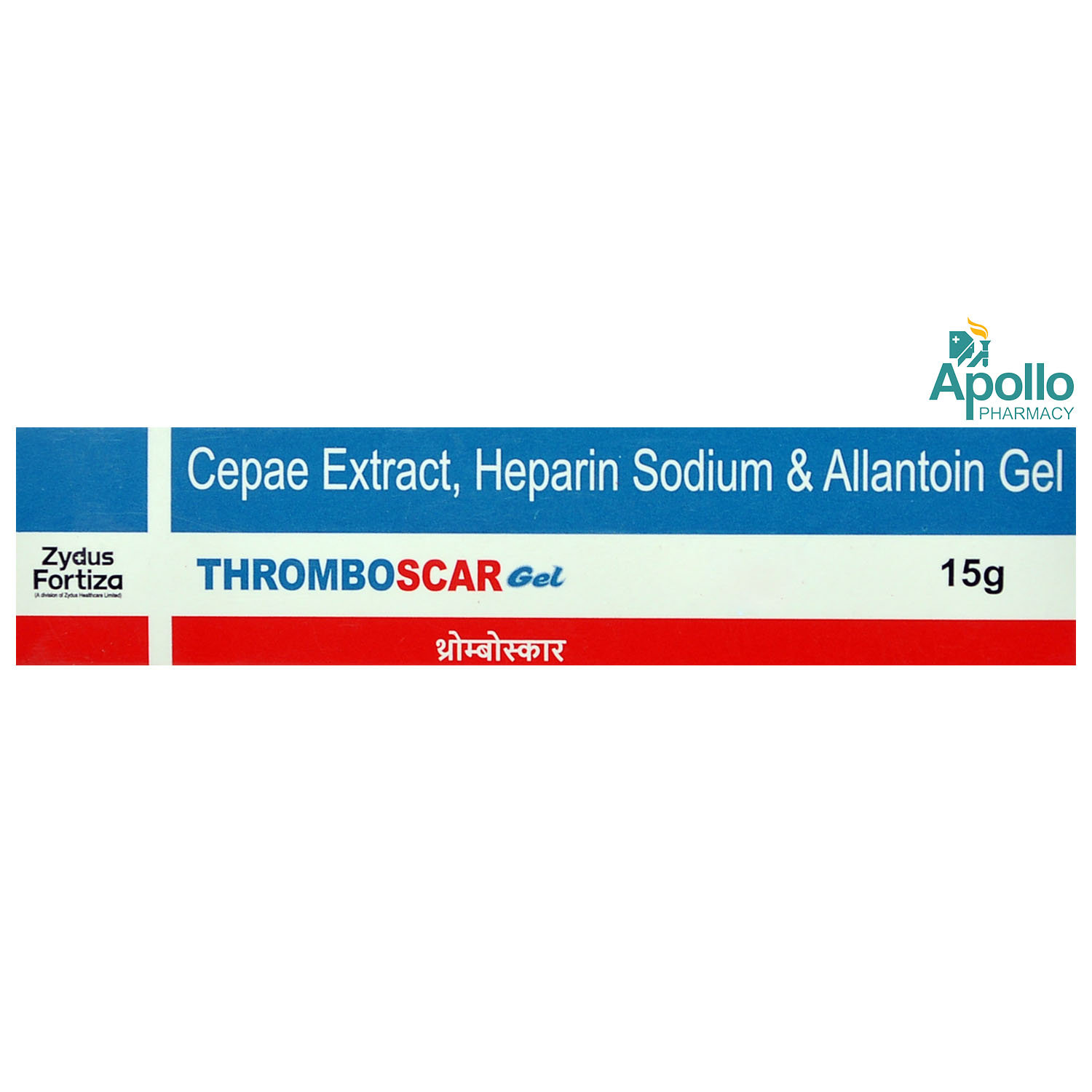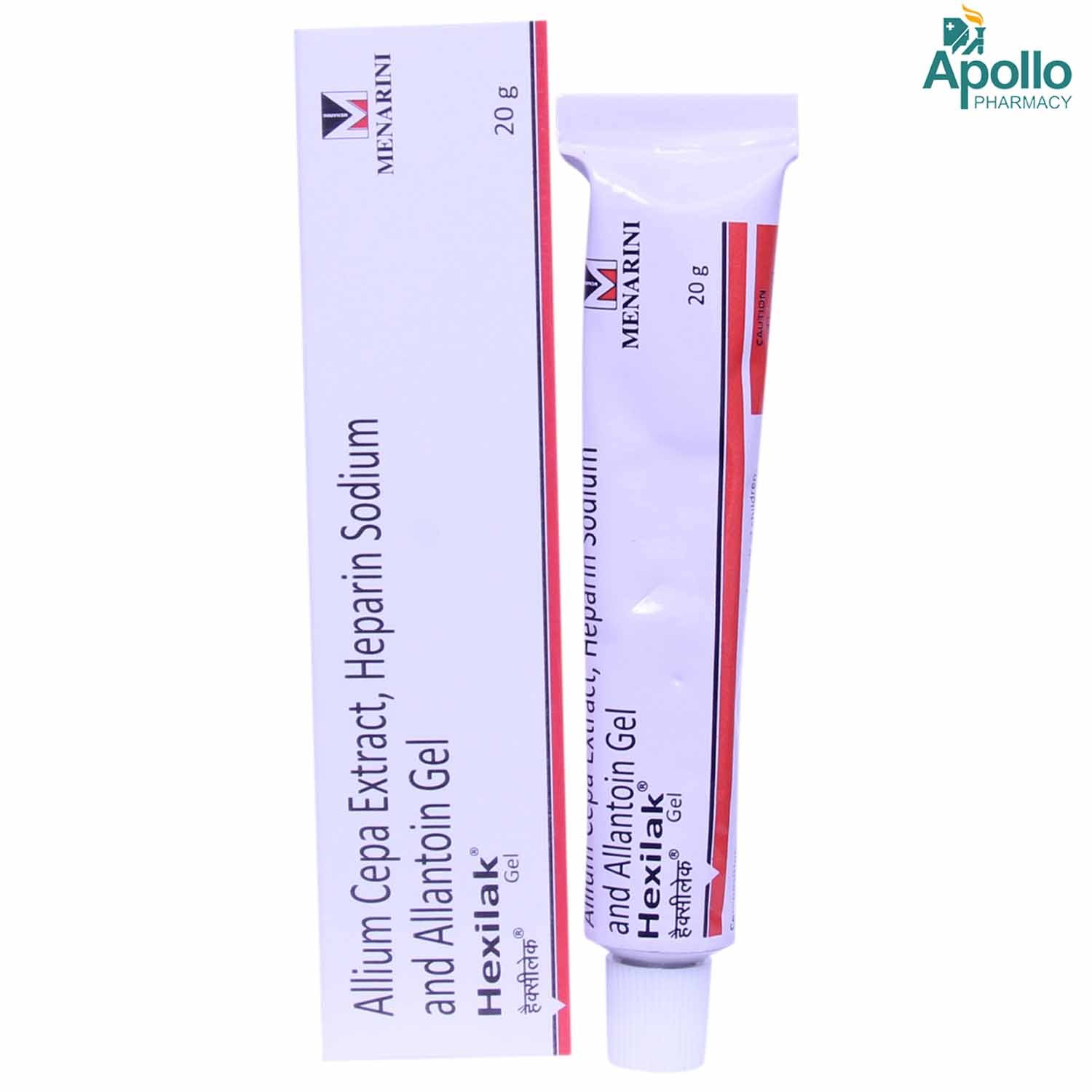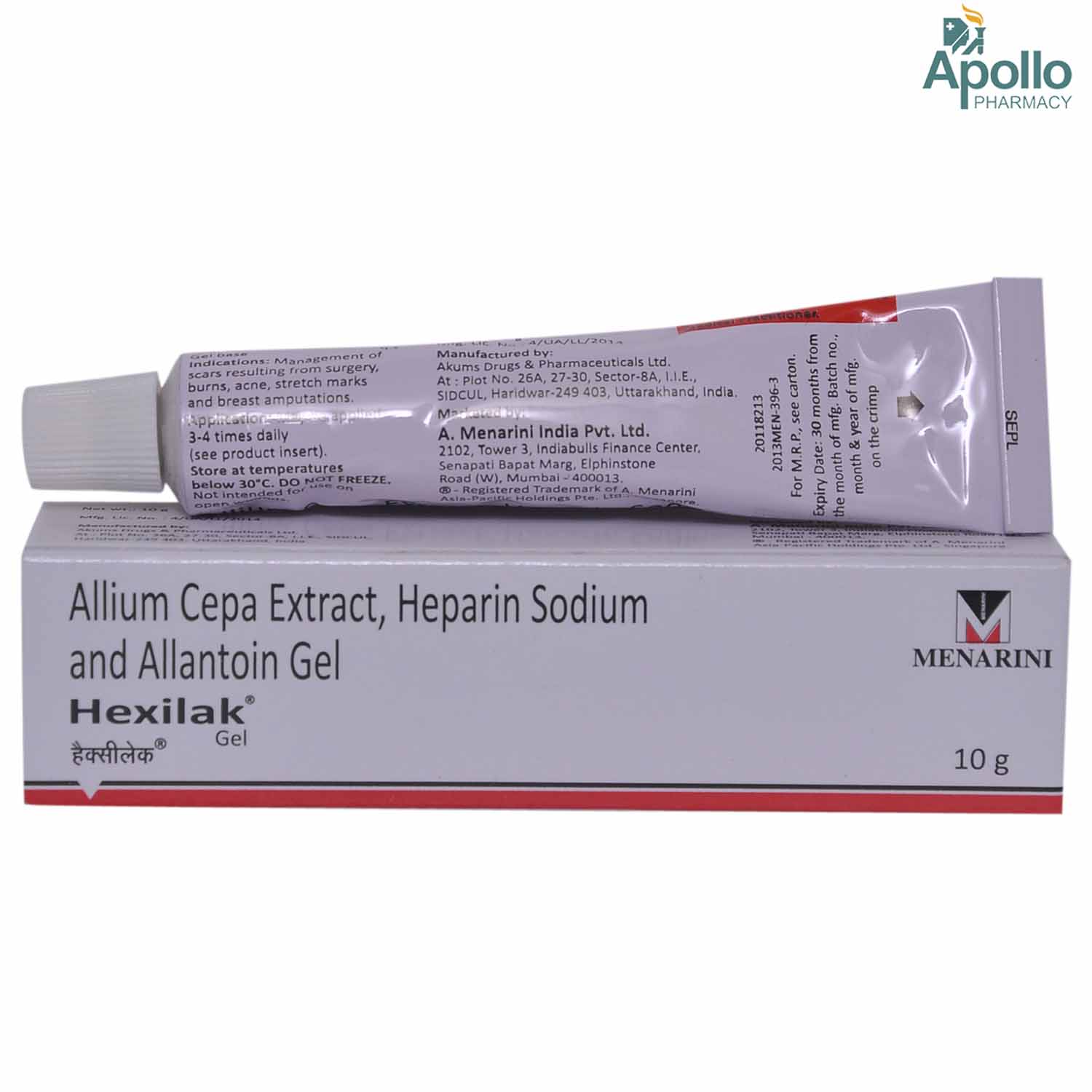Allantoin+heparin
About Allantoin+heparin
Allantoin+heparin belongs to the class of medications called ‘dermatological agents' used to treat scars. The scar is a brown or pale pink coloured patch on the skin marking the spot where the skin has healed. Scarring is the natural process that occurs after an injury or trauma to the skin. Scars can occur due to burns, accidents, cuts, scrapes, acne (a skin condition), amputations or surgery.
Allantoin+heparin is a combination of two medicines: Allantoin and Heparin. Allantoin is a keratolytic agent and works by removing dead skin cells and separating the skin's cornified layer. It also accelerates wound healing and softens the skin. Heparin has anti-inflammatory effects. It loosens the skin structure and helps in retaining moisture in the scar tissue.
You should use this medicine exactly as advised by the physician. The common side-effects of Allantoin+heparin are redness, itching, visible dilation of blood vessels and scar atrophy (imbalanced scarring) at the application site. These side effects are usually mild and do not require medical attention. If any of these side effects persist or get worse, inform your physician immediately.
Avoid using Allantoin+heparin if you are allergic to it. It is not recommended to use Allantoin+heparin on open wounds, unhealed wounds and mucous membranes (eyes, nose, mouth, and genital areas). Allantoin+heparin should be used with caution in pregnant and breastfeeding women. It is not recommended for use in children less than 1 year. It is probably safe when used in elderly people. Allantoin+heparin may not interact with alcohol and may not affect your ability to drive.
Uses of Allantoin+heparin
Medicinal Benefits
Allantoin+heparin can be used to treat hypertrophic and keloid scars (thick, irregular scars above the skin surface), scars that are cosmetically disfiguring such as scars formed due to burns, skin conditions such as acne, amputations, operations, cuts, scrapes. It is also used to treat cicatricial strictures (movement-restricting), and contractures such as Dupuytren's contractures (persistent deformity in fingers) and traumatic tendon contractures (tightening of tendons in the wrist, hands, or feet due to an injury), and atrophic scars (scars present higher or lower than the skin surface).
Directions for Use
Storage
Side Effects of Allantoin+heparin
- Redness
- Itching
- Visible dilation of blood vessels
- Scar atrophy (imbalanced scarring)
Drug Warnings
Do not use Allantoin+heparin if you are undergoing phototherapy (light therapy). Avoid sunlight, light therapy, sun lamps, tanning beds, intense massage, physical irritants and extreme cold while using Allantoin+heparin. Wear protective clothing if you are going outdoors. Do not cover the treated area with a bandage or dressing unless advised by the physician. However, you can wear normal clothing in the treated area.
Drug Interactions
Drug-Drug Interactions: No interactions found.
Drug-Food Interactions: No interactions found.
Drug-Disease Interactions: Allantoin+heparin should not be used in patients who are hypersensitive or allergic to the ingredients
Drug-Drug Interactions Checker List:
Safety Advice

Alcohol
not applicableAllantoin+heparin may not interact with alcohol.

Pregnancy
cautionThere is no sufficient data available to establish safe use of Allantoin+heparin in pregnant women. So, please consult a physician before taking Allantoin+heparin.

Breast Feeding
cautionThere is no sufficient data available to establish safe use of Allantoin+heparin in breastfeeding mothers. So, please consult a physician before taking Allantoin+heparin.

Driving
not applicableAllantoin+heparin may not affect your ability to drive.

Liver
consult your doctorAllantoin+heparin is probably safe in patients with liver diseases when recommended.

Kidney
consult your doctorAllantoin+heparin is probably safe in patients with kidney diseases when recommended.

Children
cautionIt is not recommended to use Allantoin+heparin in children below 1 year. In children above 1 year, it should be used with caution, so please consult a physician before taking Allantoin+heparin.
Habit Forming
Diet & Lifestyle Advise
- Do not scratch or pick your skin to avoid getting the affected area infected.
- Avoid getting in contact with harsh soaps, detergents and rough fabrics.
- Wear clothes with long sleeves, a hat and sunscreen of high SPF while going outdoors.
- Avoid tanning booths and sunlamps.
Special Advise
- Inform your physician if you are using any anti-coagulant medicine as Allantoin+heparin may worsen the condition.
- Limit your time in the sun, avoid tanning booths and sunlamps, and use sunscreen and wear protective clothing when outdoors.
Patients Concern
Disease/Condition Glossary
Scar: Scar is a brown or pale pink coloured patch on the skin marking the spot where the skin has healed. Scarring is the natural process that occurs after an injury or trauma to the skin. Scars usually become soft and smooth as time progresses. Scars can occur due to burns, cuts, scrapes, acne, amputations or surgery. They are three types of scars: keloid scars, hypertrophic scars and contractures. Keloid scars are round, thick, and irregular scars that form at the wound site beyond the wound's borders. Hypertrophic scars are similar to keloid scars, but they form within the borders of the wound. Contractures are scars that form when a larger area of skin is damaged and lost, such as surgery.
FAQs
Allantoin+heparin is a combination of two medicines: Allantoin and Heparin. Allantoin works by removing dead skin cells and separate the cornified layer of the skin. It also accelerates wound healing and softens the skin. Heparin loosens the skin structure and helps in retaining moisture in the scar tissue.
The duration of treatment with Allantoin+heparin depends on the size of the scar or contracture. It may take several weeks to months to treat a scar.
The common side-effects of Allantoin+heparin are redness, itching, visible dilation of blood vessels and scar atrophy (imbalanced scarring) at the application site. These side-effects are usually mild. If any of these side-effects persist or get worse, inform your physician immediately.
Allantoin+heparin should not be used on open wounds, unhealed wounds and mucous membranes (eyes, nose, mouth, and genital areas). Avoid sunlight, light therapy, sun lamps, tanning beds, intense massage, physical irritants and extreme cold weathers while using Allantoin+heparin. Do not cover the treated area with bandage or dressing, unless advised by the physician.
Inform your physician before using any medications while using Allantoin+heparin. If the physician suggest other skin creams or ointments along with Allantoin+heparin, you should maintain an interval of at least 30 min between the two medications.
Available Medicines for
Allantoin+heparin
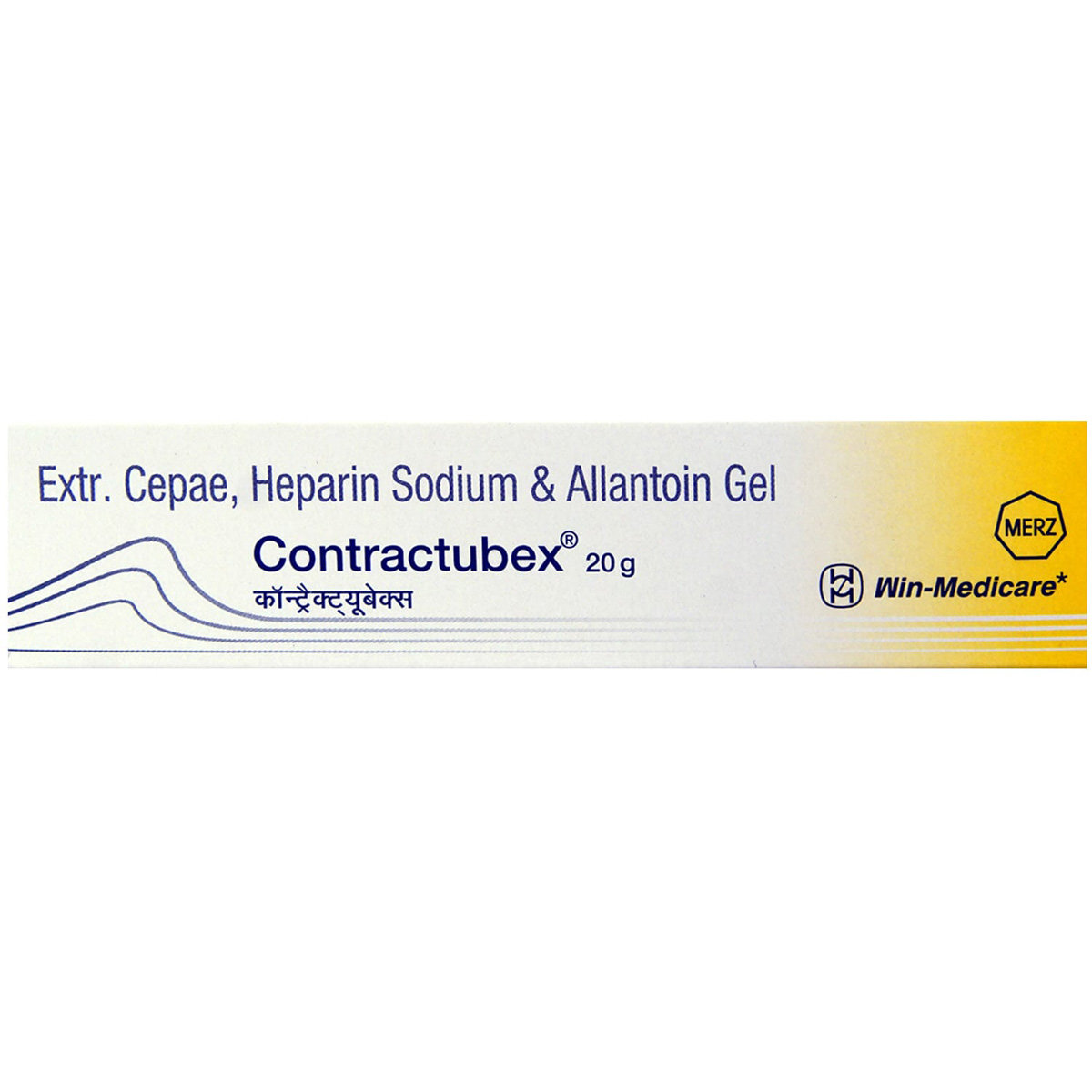
Contractubex Gel 20 gm | Extr Cepae Fluid, Heparin Sodium, Allantoin | Helps In Managing Scars Of Any Etiology
1 Tube
₹1304.6 (MRP 1534.5)15%Off
cashback: 0

